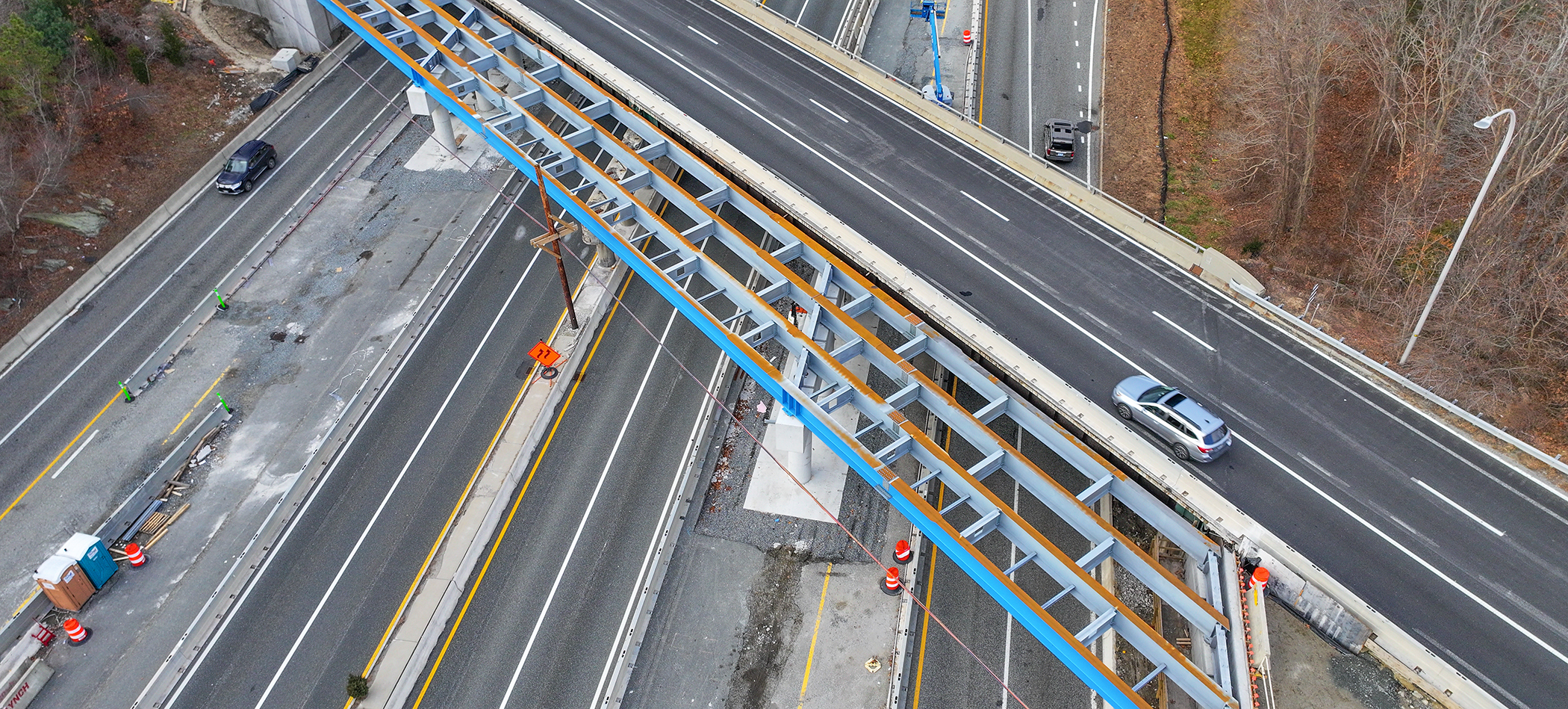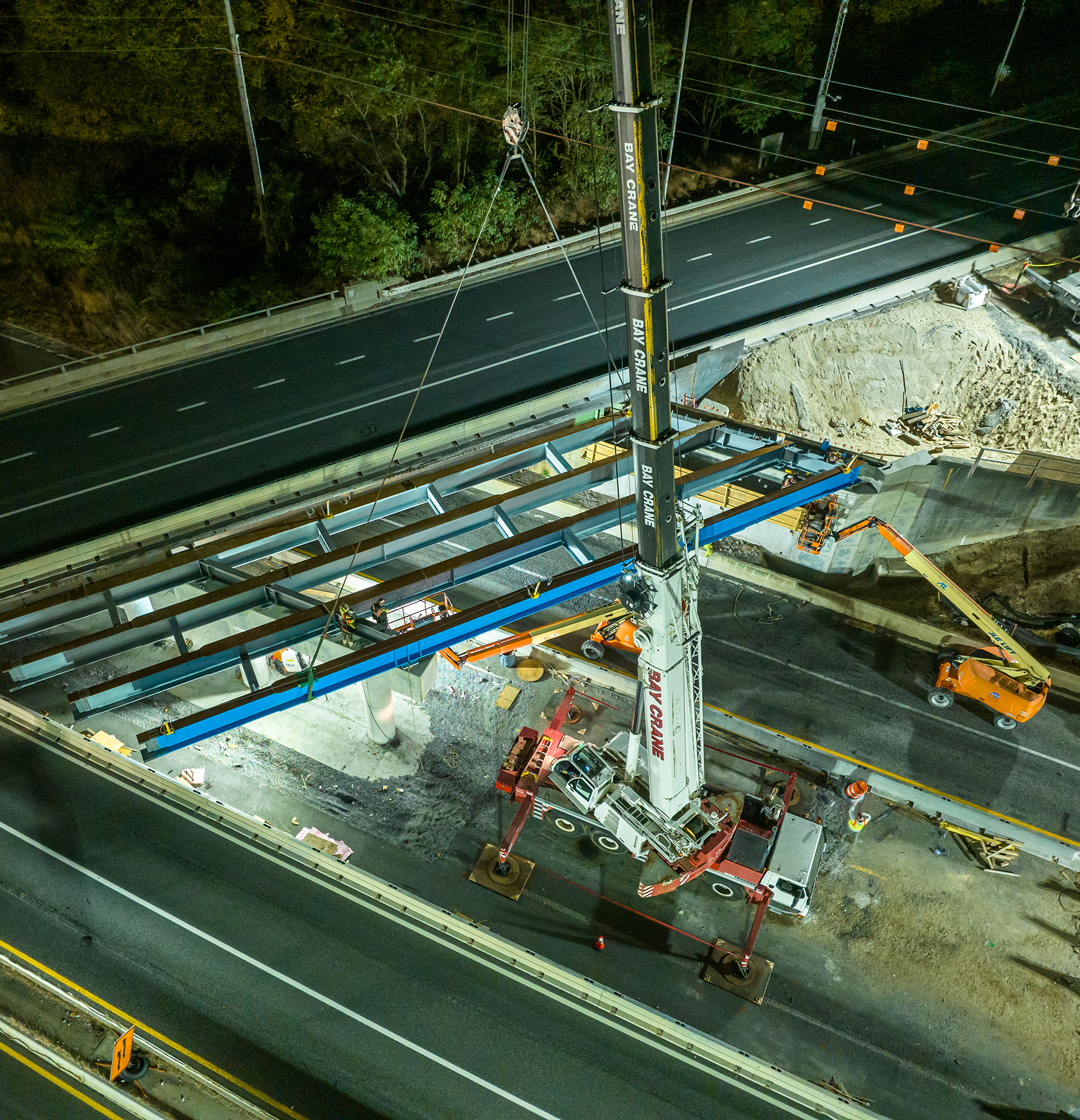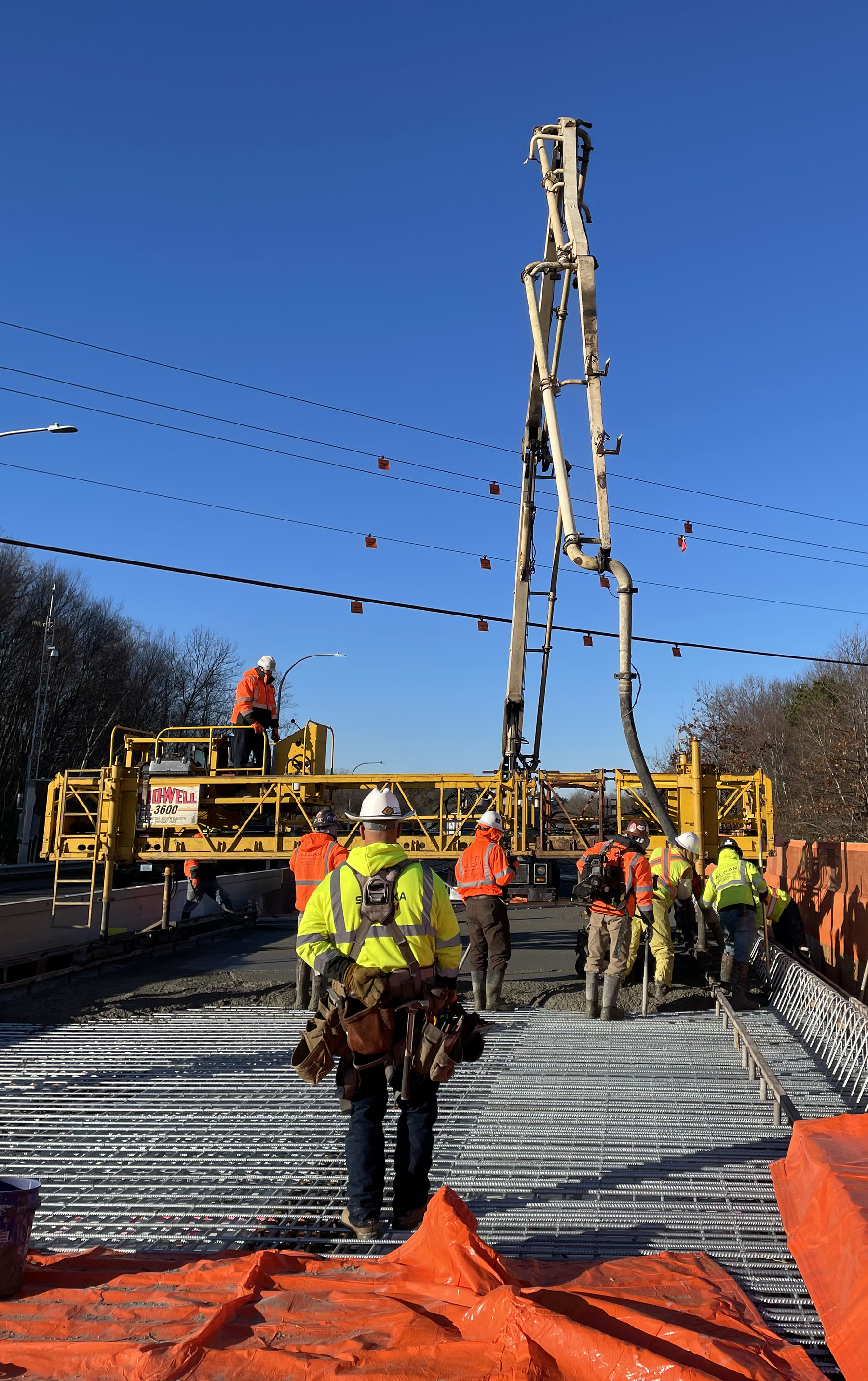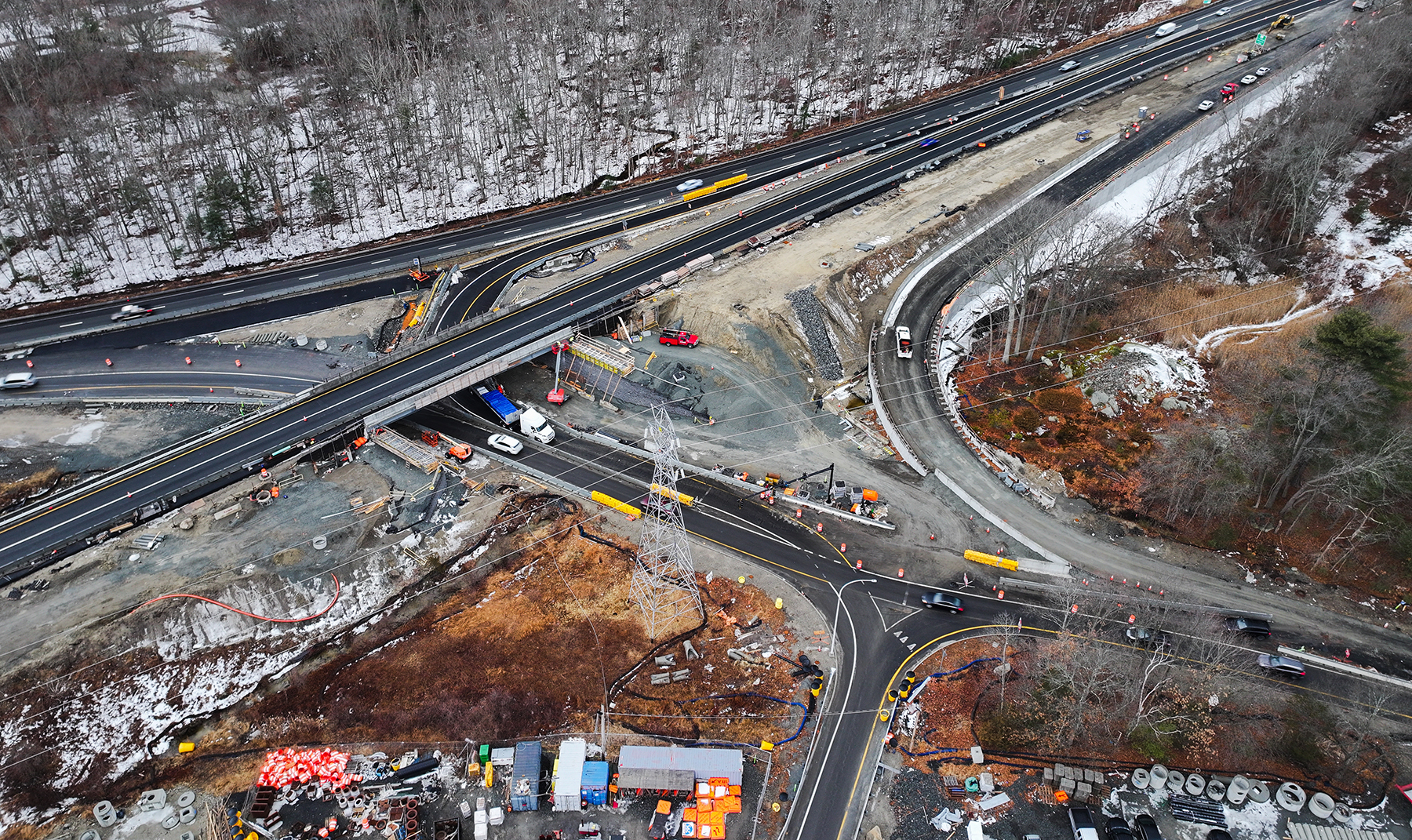 Sean Cobelli, Skanska USA Civil
Sean Cobelli, Skanska USA Civil A major highway project in New England is making sizable impacts not only on local commuters and residents but also on a firm’s efforts to foster the growth of the construction and civil engineering industry’s next generation.
The Route 146 Reconstruction Project, a design-build contract for the Rhode Island Department of Transportation, addresses longstanding safety, congestion, and infrastructure deficiencies along an 8-mile corridor that provides a vital link for more than 171,000 vehicles daily.
Further reading:
- Mentoring is a civil engineer’s professional obligation
- How do you know when you’re ready to become a mentor?
- Keep up with mentors and roll with the punches
The project team is a joint venture of Skanska and J.H. Lynch & Sons, with HNTB Corp. as the lead designer. Major subcontractors include Atlantic Bridge & Engineering, Cosco Fence & Guardrail, and Rossi Electric.
The stretch of roadway – between Providence, Rhode Island, and Worcester, Massachusetts – is particularly problematic because of significantly deteriorated pavement and congestion issues, hindering the continuous and efficient flow of traffic. Beyond restoring the highway to a state of good repair, the project implements substantial enhancements to improve this essential freight connector.
 Sean Cobelli, Skanska USA Civil
Sean Cobelli, Skanska USA Civil A key improvement is the replacement in North Smithfield, Rhode Island, of the outdated Route 146/Sayles Hill Road signalized intersection with a flyover bridge. This advancement directly addresses the preconstruction safety concerns, which included an average of 180 annual crashes, with 85 of those attributed to this intersection.
The project calls for repaving 8 miles of Route 146 between Interstate 295 in Rhode Island and the Massachusetts state line. Within the corridor, the team will replace three critical bridges, including the I-295 overpasses, which will provide increased vertical clearance for truck passage. Another key feature is the replacement of a hazardous U-turn ramp at the Route 146/146A junction with a diverging diamond interchange, designed to streamline traffic movement and enhance overall efficiency.
Additional safety enhancements include intelligent transportation systems throughout the corridor, a dedicated bus-on-shoulder lane into Providence, and proactive wrong-way and overweight vehicle detection systems. These systems immediately alert authorities when a vehicle enters the highway in the wrong direction or an overweight truck is detected.
The project demands innovative solutions to unique challenges. One involved Skanska and its partners adeptly navigating the project’s severely constrained right of way through strategic design adaptations.
A prime example is the Sayles Hill flyover. This 62-foot-wide structure, bordered by collector-distributor roads, demands construction of the entire footprint within inches of the state right-of-way boundary while simultaneously maintaining traffic flow.
To achieve this, the team is constructing the flyover in three sections. The initial phase features a 22-foot-wide section extending approximately 1,000 feet on either side of the bridge abutments, using temporary mechanically stabilized earth wire walls. This phase allows for the first Route 146 travel lane on the newly constructed structure, elevated 22 feet above Sayles Hill Road.
After the initial phase, the team will install permanent precast concrete fascia walls in two subsequent phases, effectively encapsulating the temporary structure in place. This phasing approach has minimized the impact on commuters by maintaining two lanes of travel in each direction throughout the construction process.
The end result
Once completed, the final condition will provide two free-flowing main line lanes in each direction, complemented by collector-distributor roads below for local access.
Additionally, the project’s roadway resurfacing component, aimed at improving rideability and pavement lifespan, required an incremental design effort. The initial plan, involving a 1.8-inch micro-milling and 1.5-inch friction course overlay, was revised upon the team’s discovery of a nonuniform roadway profile throughout the corridor.
 Anna Behringer, Skanska USA Civil
Anna Behringer, Skanska USA CivilTo improve the conveyance of water off the travel lanes and increase the catchment efficacy of each drainage inlet, the team was tasked with reprofiling the roadway to achieve a consistent 2% normal crown while maintaining 5 inches of asphalt cover over the existing concrete road base.
Using state-of-the-art, vehicle-mounted, 3D mobile scanning technology, the team mapped the existing roadway topography without hindering traffic flow. Leveraging this data along with localized asphalt cores, the team delivered a revised grading design that met RIDOT’s requirements.
The team will use GPS-guided machine control to perform up to 2 inches of variable depth milling followed by up to 11 inches of variable shim course paving. Finally, the team will pave a 1.5-inch friction course on top of the reprofiled roadway, which will ensure the rideability meets design standards.
This innovative solution not only provides RIDOT with a significantly improved roadway profile but also prompted the joint venture to develop an alternative construction sequence, transitioning from three months of nightly lane closures to six less disruptive extended-weekend work windows, minimizing impact on commuters and the local community.
Training the next generation
While the Route 146 Reconstruction Project will have an indelible impact on the commutes of thousands, it has also been a vital training ground for up-and-coming civil engineers at Skanska. Their dedication and talent have been instrumental to the project’s success.
Across New England, there is an unprecedented surge in infrastructure spending, creating an opportunity for younger generations of construction professionals to roll up their sleeves and be involved in some of the region’s most significant, transformative projects.
Careers in heavy civil construction offer unique challenges, but the rewards are profound. There’s a unique sense of accomplishment in building something tangible. Those involved with the design and construction of infrastructure such as bridges, roads, and train stations receive immense fulfillment.
But more significant than personal pride is the lasting impact such projects have on society. The work shapes the infrastructure that connects and sustains communities. For young engineers, the Route 146 Reconstruction Project – and projects like it – represents more than just a job; it is an opportunity to shape the future.
Construction on Route 146 is ongoing, with the majority of construction operations expected to be completed by fall 2026 and final paving completed by August 2027.
 Sean Cobelli, Skanska USA Civil
Sean Cobelli, Skanska USA Civil



